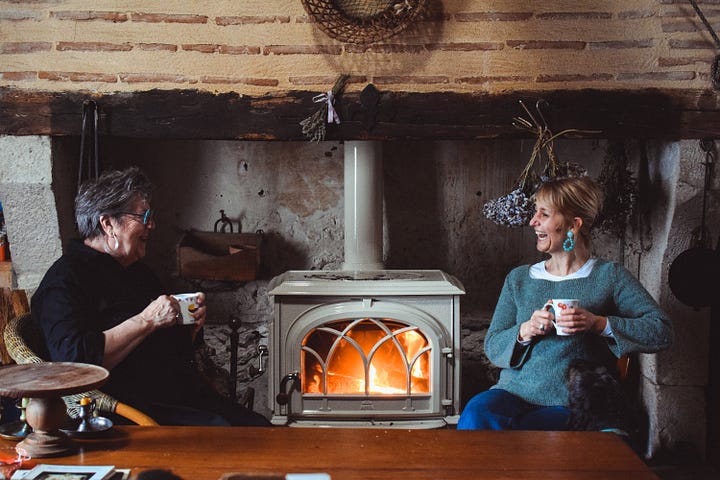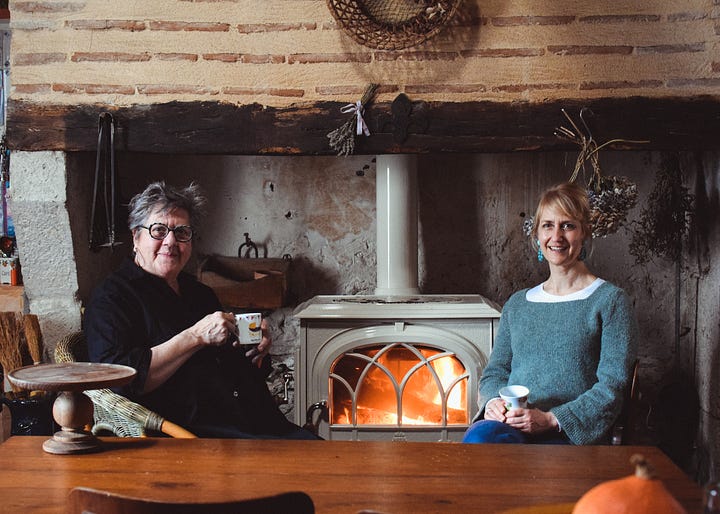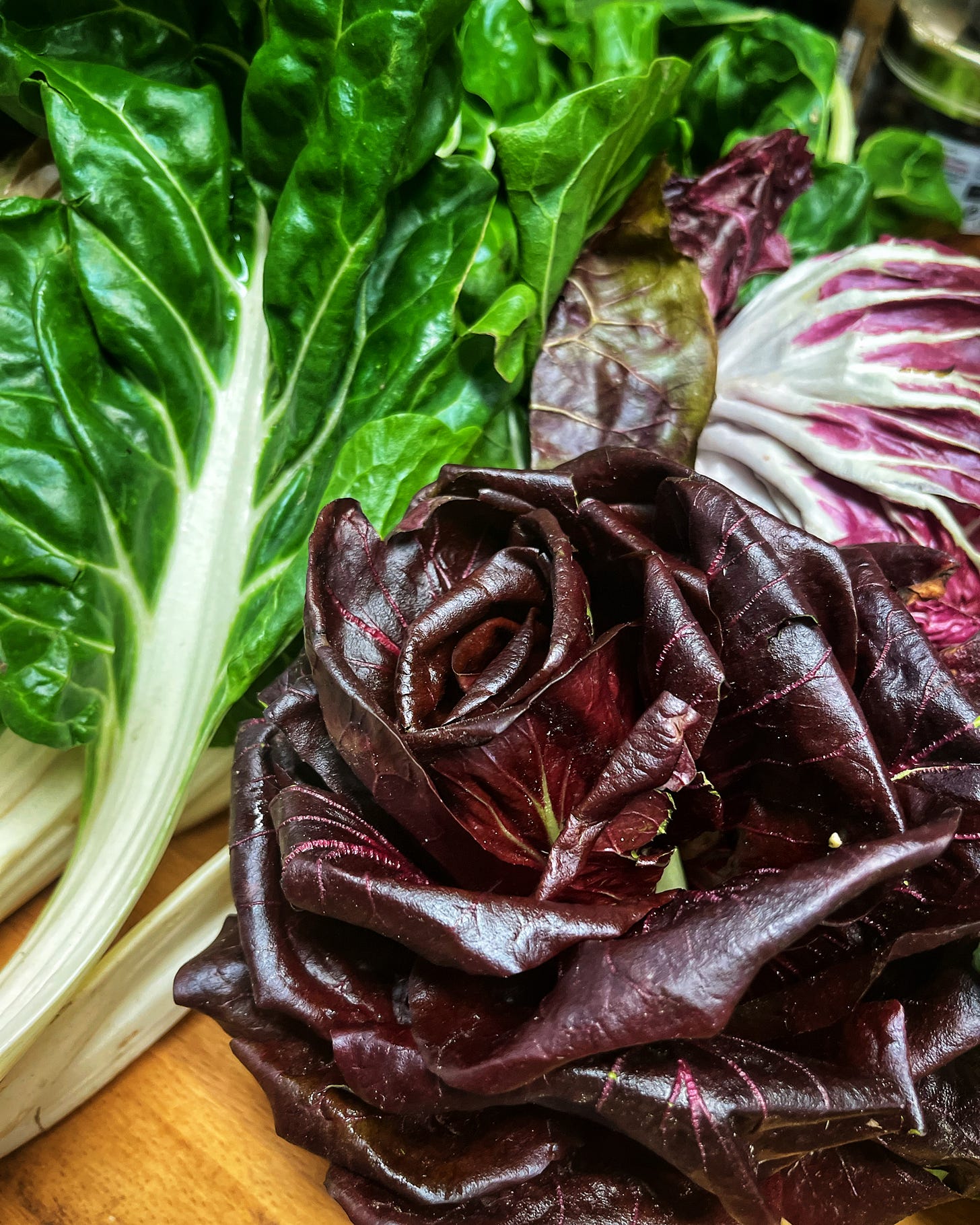Le Giboulées de Mars
The Giboulées de Mars arrived with a vengeance this week—that sunshine, hail, wind, and rain all coming at once! It’s like a wild west show with flying branches, the dead wood from winter, spearing into the damp earth, fragile new blossoms-- hellebores and flowering quince dodging the peanut size hailstones. We had lunch outside in the sun before distant thunder announced a coming rain. How do you make plans for days like these?
I don’t. While there has been much planning, planting, and pruning going on outside, thanks to Working Resident Harriet Davidson (see more of her glorious photographs of Camont and the garden here), I am more likely to be at the keyboard filling in a spreadsheet for the coming three seasons of Creative residencies. To date, over fifteen writers, artists, and other creatives have committed to arriving from all points of the globe. You can follow along now on Instagram here. My job is to keep everyone’s questions answered, travel accounted for, and rooms booked. It’s a slow but healthy start for a first-year venture. I am no longer teaching cooking (oops, sorry if you're just getting the news!), but I still cook. And as much as I love to cook and eat, I also love to talk about food. And other important matters. So how to cook in this crazy month of March?
What’s in and what’s out
March is one of those months in the kitchen where we teeter between the seasons- hot, warming soups are most welcome at the end of a damp day, but I begin to crave fresh, green, and crunchy. In A Gascon Year March edition, there are solutions for all. Consider this short recipe for one- Swiss chard fritters that satisfy my deep greens and the occasional deep-fried cravings. I had these once in the weekly market in old Laguiole town, on a weekend pilgrimage to the Auvergne and Michel Bras 3-star restaurant. As refined and exciting as Bras's food is, I will always cherish time spent in the kitchen interviewing him while his mother, who in her little animal-print twin-set and pearls, made the aligot for the lunch service off to one side of the 25-strong brigade of young cooks.
Madame Bras and the farmer’s wife who cooked the fritters called les farçoux had a lot in common. Their expertise came from banging a heavy wooden spoon in large metal bowls over hundreds of meals for their families and friends. My own superpower comes from a preternatural desire to use up what’s lying around in my kitchen, refrigerator, or pantry. It starts because I shop like a banshee announcing impending famine. I buy what looks good, fresh, and enticing. This week we had the leftovers of a 5€ box of root vegetables from a neighboring farm-black radish, a small pumpkin, a few sad little radicchios the size of tennis balls, and parsnips. Lots of parsnips that became a thick savory soup with a tart/sweet apple thrown in. There was a large handful of salt cod shards in the fridge that I had forgotten. They didn’t need much soaking, and so after a couple of hours, a change or two of water, I combined them in an egg-rich batter with some greens from the four little kohlrabies we bought. Together with a rabbit liver terrine, it all made a perfect Spring lunch.
I use this accumulated abundance with a certain flair, based on years of cooking for drop-in visitors or those poor friends who I’ve forgotten to have invited for lunch. I also have always worked all morning until the last minute and then dropped everything in a heavy thud to attack the kitchen with a hunger akin to a wild woman.
Yes, this piece of ventrèche and that half of Chinese cabbage.
And don’t forget some shallots.
Keep the cauliflower greens for soup.
An egg will bind it together, and roughly chop those greens you’ve cleared from the chard bed. Throw the oil in the pan and get it hot. I’m starving!
That’s me in the kitchen.
Cooking once for twice…
Yesterday, there was a lamb shoulder I bought at the market, dusted with salt, pepper, and a pimentón based provençal spice mix, doused with a glass of white wine (and some orange juice later), and left to cook for a few hours, first on the stove in a cast iron Dutch oven and then in the oven so as not to scorch the bottom. We didn’t eat it until today, when some of it was sliced and tossed into a pan to crisp up, stuffing it into some pita bread with yogurt and hummus, cilantro, and lettuce. A fast food lunch with non-French flavors to break the day. The rest of the lamb is in the fridge waiting for an inspired supper sandwich with eggplant pickle and homemade chutney. It goes on and on.
Today the counter is full of fresh greens and a cauliflower in her robe from the Saturday market. I’ll throw the chard greens in everything—stirfry, soup, omelet— and keep the cauliflower for a full meal, steamed and dressed in an anchovy and garlic breadcrumbs crumble. A thin-skinned pintade (guinea hen) awaits as the Sunday roast- replacing the chicken, or maybe we’ll braise it with shiitake mushrooms in an elderberry vinegar sauce and serve it over la cruchade (Gascon polenta).
March cooking is as tempestuous as the weather. I don’t linger too long on any one idea else the whims and winds will blow it away. Put a pot on, simmer two artichokes, and scrape the softened meat to make a simple soup thickened with buckwheat flour and butter. Add water. And a dollop of crème fraîche. Soupe d’Artichaut Breton!
Inspired? Or overwhelmed? Start small and choose one delicious in-season ingredient that you love. How best to cook it? How to season it or serve it? The secret to good seasonal cooking is focus. While my pantry wants to overflow in many directions at once, I try to take one meal at a time—savor it, share it, and move on.
Here’s a favorite little recipe to start you thinking. Use the tops of radish greens, or any fresh greens—watercress, chard, spinach, nettles, and treat this simple soup as a spring green starter to using the parts of the garden usually ignored.
Soupe aux Fanes de Radis
Try this simple Radish Leaf soup from my first cookbook- A Culinary Journey in Gascony. It’s a wonderful way to celebrate spring and the first greens to poke through the rich garden soil. Start cooking as you unpack your baskets, then grab a piece of saucisson and a baguette. Eh, Voila! a perfect Spring lunch..
Serves 6
1 bunch of firm red radishes, with leaves
1 1⁄2 teaspoons sweet butter
1 onion, chopped finely
3 cloves garlic, crushed
salt and fresh ground pepper, to taste
a sprinkle of freshly ground nutmeg
2 potatoes, peeled and chopped
Take the fresh and pungent bunch of radishes and twist the radishes off their leaves. Set the radishes aside for eating. Wash the leaves under running water and drain.
Melt butter. Place onion and garlic in a 2-quart soup pan as the butter is melting.
After shaking off the excess water, add the whole radish leaves to the onion/ garlic mixture. Cook until wilted for a few minutes, then add 1 quart (1 liter) hot water.
As it comes to a boil, season with salt, pepper and nutmeg over medium heat.
Add the potatoes and cook 15 to 20 minutes. When potatoes are soft, puree soup with a hand mixer, a blender, or a food mill. Toast thin slices of bread in duck fat in a heavy skillet and serve with sliced radishes.
VARIATIONS NETTLES AND OTHER GREENS
This basic green soup can be made with fresh nettles as they appear in the spring. Wear gloves and pinch the most tender top leaves off; soak for ten minutes then rinse under warm water (the sting is from water-soluble formic acid that is on the underside of the leaf). Sorrel, watercress, and other fresh tender greens can also be used.
Hurrah! The Dames du Paradis Podcast #3 is now live!










We love this soup. I think it might have been the first thing I cooked from A Culinary Journey. Whenever we eat it, I think of you and the magic of Camont.
Thank you Kate very inspiring because I just always discarded the greens from radishes cauliflower learned something today. This week I was introduced to a new condiment called Dukkah an Arabic spice and nut combination it taste awesome. With Easter I will make a rub with garlic and lots of Dukka for my fresh Leg of Lamb roasted on a bed of aubergine